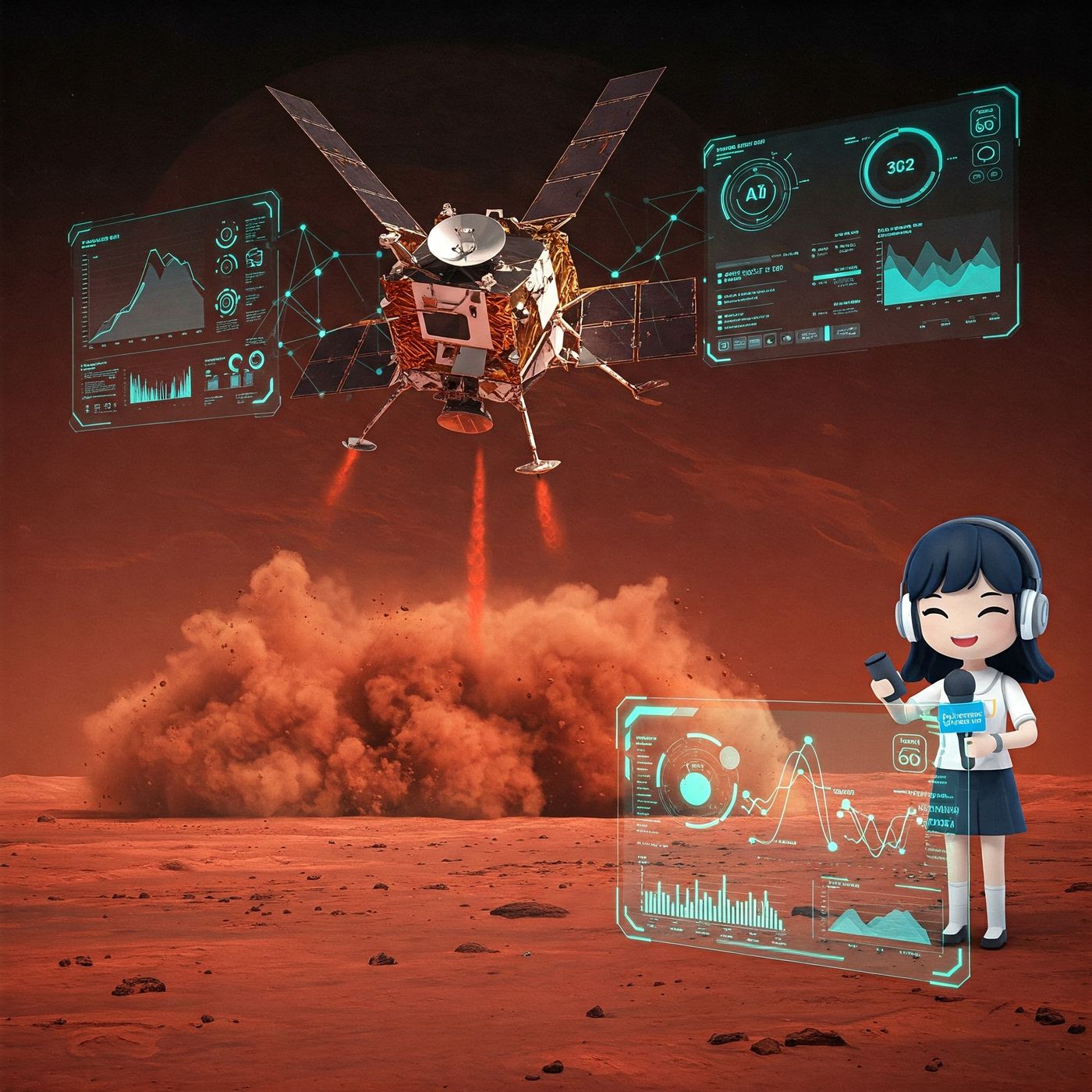Mission to Mars: Raw Audio Logs & Expert Breakdown by Google Gemini
- Author
- Flor Elizabeth Carrasco
- Published
- Wed 19 Mar 2025
- Episode Link
- https://worldreadingclub.com/1137/
Dive into the heart of a simulated Mars landing with this unfiltered audio experience!
Hear the tense, real-time dialogue between AI systems officer Capella and astronaut Hakeem Ali-Bocas Alexander as they navigate atmospheric entry, powered descent, and touchdown on the Red Planet.
Enhanced by Google Gemini’s expert analysis, this episode decodes the mission’s technical challenges—from heat-shield diagnostics to radiation levels—and explores the synergy between human intuition and AI precision.
Perfect for space enthusiasts, educators, and anyone curious about the future of interplanetary exploration. - DeepSeek
Episode 242 - World Reading Club [W[R]C]
Mars Landing: Raw Audio with Gemini Audio Overview
UnEdited Galaxy AI TranScript Summary Processed by DeepSeek
Mars Landing Mission Timeline and Procedures
1. Pre-Entry Preparations
Hear the tense, real-time dialogue between AI systems officer Capella and astronaut Hakeem Ali-Bocas Alexander as they navigate atmospheric entry, powered descent, and touchdown on the Red Planet.
Enhanced by Google Gemini’s expert analysis, this episode decodes the mission’s technical challenges—from heat-shield diagnostics to radiation levels—and explores the synergy between human intuition and AI precision.
Perfect for space enthusiasts, educators, and anyone curious about the future of interplanetary exploration. - DeepSeek
Episode 242 - World Reading Club [W[R]C]
Mars Landing: Raw Audio with Gemini Audio Overview
UnEdited Galaxy AI TranScript Summary Processed by DeepSeek
Mars Landing Mission Timeline and Procedures
1. Pre-Entry Preparations
- Landing Zone Selection:
- Flat area in the northern hemisphere confirmed.
- Atmospheric conditions verified: calm winds, no dust storms.
- Entry Readiness:
- Engine ignition and deceleration protocols initiated.
- Initial Descent Profile:
- Altitude: 80 km.
- Deceleration rate: 15 km/s.
- Critical Phases:
- Parachute deployment completed.
- Transition to powered descent initiated.
- Power Descent Countdown:
- 2-minute countdown started (based on speed/altitude).
- Engines fired after 30-second warning.
- Maneuvers:
- Vertical speed reduced by 5 m/s; horizontal speed by 2 m/s.
- Landing camera activated; fuel levels monitored.
- Touchdown:
- Surface visibility confirmed.
- Engines throttled for soft landing.
- Success: All systems operational; touchdown confirmed.
- Immediate Actions:
- Celebration (music played).
- Engine shutdown and cooling to 50°C.
- Heat shield inspection: minor charring, no critical damage.
- Systems Stabilization:
- Landing gear deployed after engine cooling (5–6 minutes post-recalculation).
- Stabilizers confirmed operational.
- Key Assessments:
- Engine Status: Cooled from 57°C to 50°C (post-recalculation with -50°C ambient).
- Radiation Levels: 100 millisieverts/year (safe for short-term exposure).
- Temperature Readings: -50°C recorded by weather sensors.
- Full Systems Review:
- Life support, communications, navigation confirmed "green."
- Science instruments (cameras, soil tools, weather sensors) functional.
- Pre-Deployment Checks:
- Landing site cleared via camera feed (no hazards detected).
- Radiation detectors and photographic systems baselined.
- Next Steps:
- Short break scheduled before rover deployment.
- Initial exploration via spacecraft cameras prior to rover release.
- Critical Successes:
- Precision landing in target zone.
- Adaptive cooling timeline (recalculated for temperature variance).
- Future Actions:
- Surface exploration and data collection.
- Rover deployment for extended mission.
- Temperature corrections (-60°C to -50°C) impacted engine cooling timelines, resolved efficiently.
- All systems post-landing operational, enabling immediate scientific operations.
